Southwest Michigan field crops update – Aug. 26, 2021
Continued hot weather has pushed crops nearly two weeks ahead of normal. Recent rainfall throughout most of the southwest may be enough to see the crop through to maturity.

Weather
Do we even need to say it? Temperatures have been above normal this past week by 5-8 degrees, which has pushed us closer to 200 growing degree days (GDD) base 50 or roughly two weeks ahead of normal. Forecasted reference potential evapotranspiration is about normal for this time of year at 1.1-1.2 inches.
The hot and humid weather will be with us through the end of this weekend as a warm front lingers over the state, but an approaching cold front will bring some relief early next week. High temperatures will be in the low- to mid-80s, which is normal for late-August, but humidity levels will drop back to normal levels and, just as important, nighttime temperatures will drop down to lower 60s and even into the 50s by the end of next week. The mid-range forecast models predict above-normal temperatures heading into the first week of September.
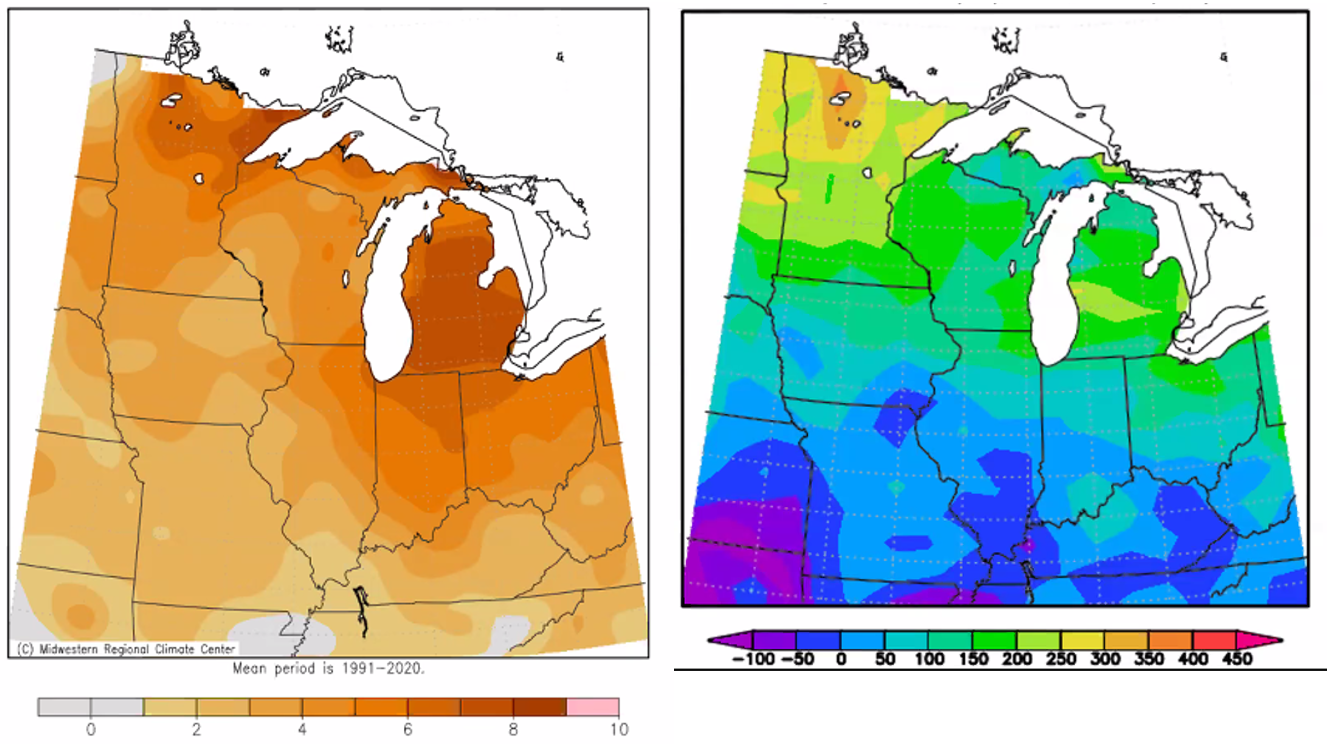
The region saw little rainfall this past week until the widespread storm system came through Michigan on Tuesday night. Precipitation totals ranged from less than half an inch to over 3 inches depending on how long one of those localized storm cells remained stationary. This storm system may have provided enough rainfall to see the corn and soybean crop through to maturity—see the Irrigation section below for more details.
Rainfall totals this coming week are predicted to range from less than 0.5 inch to nearly 1.5 inches, most of that coming Friday and Sunday evening. According to Michigan State University Extension agricultural climatologist Jeff Andresen, the wild card this coming week will be whether the remnants of Tropical Storm Ida coming in from the Gulf of Mexico make their way far enough north to bring moisture as far as Michigan. The 6-10 day outlook has no guidance on rainfall and the 8-14 day predicts a slight chance of above-normal precipitation.

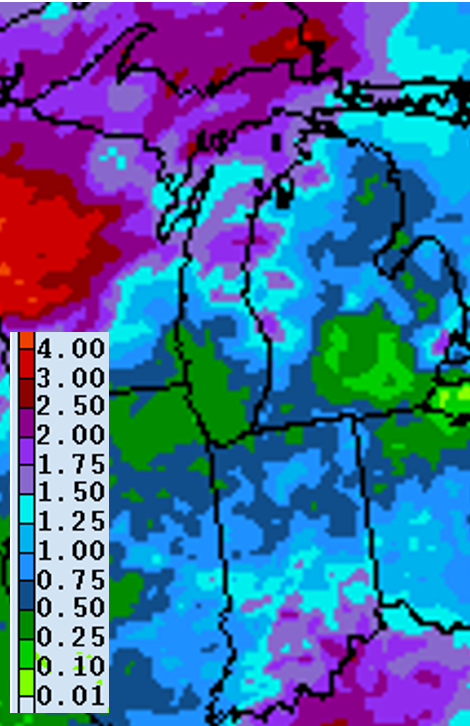


Crops and pests
Corn in the region is mostly in the dent stage (R5). It takes roughly 20 days for the milk line (separation between liquid and solid starch in the kernel) to advance from the edge of the kernel to the tip (black layer or physiological maturity), so at one-fourth milk line a crop would be two weeks away from black layer.
Corn silage harvest has begun in Michigan—consider participating in the free 2021 Corn Silage Mycotoxin Survey being conducted by the MSU Agronomy Program. Results on mycotoxins and quality will be shared with you, but your personal information will stay confidential. Corn water use diminishes once the dent stage has been reached to now being equal with the reference crop (1.1-1.2 inches needed this week) and will further decrease to two-thirds that of the grass reference crop once black layer has been reached.
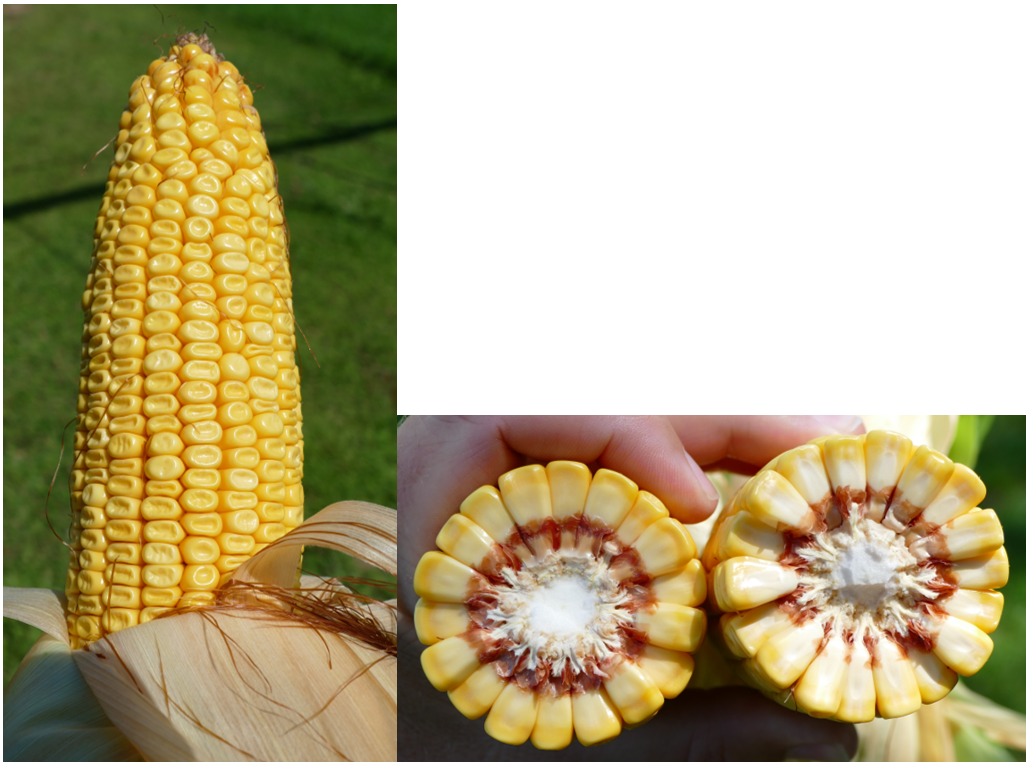
Soybean has reached full seed (R6, pod containing a green seed that fills the pod capacity at one of the four uppermost nodes on the main stem) with patches in many fields moving toward R7. Soybean at this stage will require roughly 1.3–1.4 inches this coming week, but once the crop reaches R7, water use will drop back to being equal to the reference grass crop use rate.
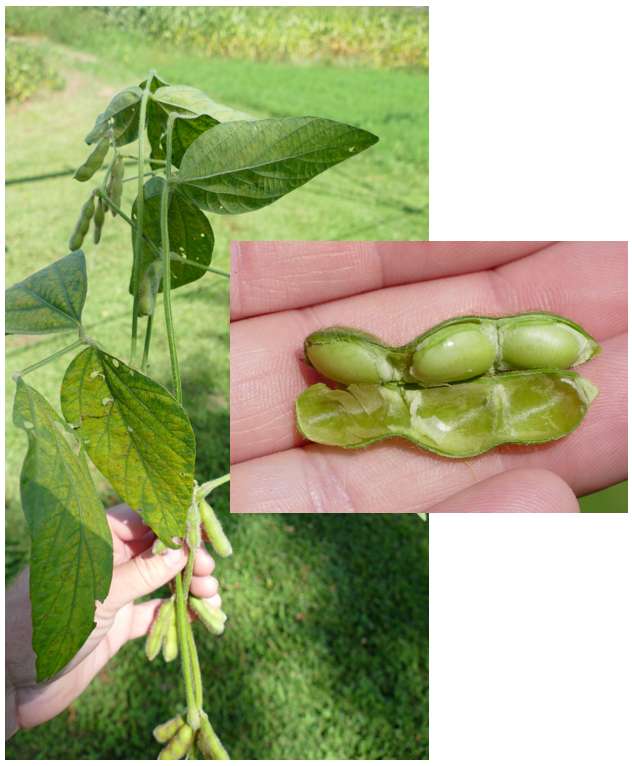
Corn tar spot infections continue to advance and the disease has been confirmed in all counties in the southern half of the Lower Peninsula. Lesions are now easy to find throughout the canopy in many fields. MSU Extension field crops pathologist Marty Chilvers recommends scouting fields now to assess stalk strength to aid in prioritizing fields for harvest. Tar spot can be associated with stalk rot diseases and can also cannibalize stalk carbohydrates resulting in compromised stalks. Here is a link to a quick video showing two methods for determining stalk strength.
Chilvers is also interested in learning more about whether southern rust is being found in Michigan since disease levels have been higher than usual further south. As southern rust can be difficult to distinguish from common rust for many people, he suggests taking leaf samples with suspected southern rust infection, allowing them to dry down, and sending them to him (578 Wilson Rd, CIPS 104, East Lansing, MI 48823).
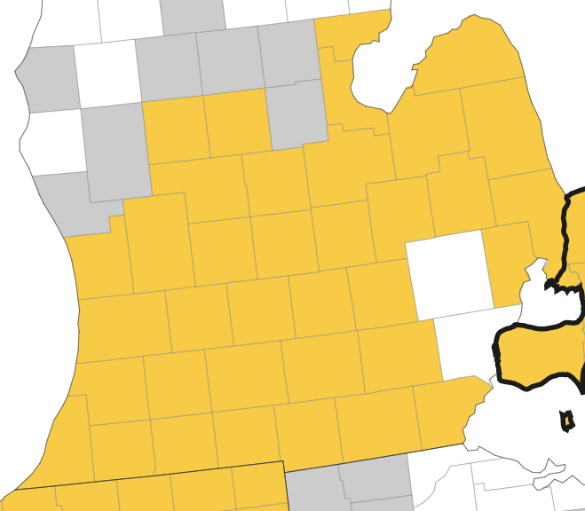
Irrigation
With corn in the dent stage, irrigators may be able to cease watering for the season assuming they have received adequate rainfall recently and the soil profile is filled. Most soils should be able to hold 2-3 inches or more in the rooting zone which should be enough to see the crop through to black layer even without rainfall in the next two weeks. For soybean, the rule of thumb is to continue watering until 50 percent of the plants have yellowed, and some early-planted fields may reach that point in the region by the end of this coming weekend.
More information about end-of-season irrigation decisions can be found in the article from 2020, “Irrigate all the way to the end.” You can also find more details about end-of-season crop water needs in the resource “Soil Water Balance Sheet” found on the MSU Extension Irrigation website.
Join us for the next MSU Irrigation Webinar on Sept. 1. Topics will include timing the last irrigation, timing and designing your project for minimized cost, and considering growing cereals under irrigation. Cost is free, register online to receive the link which will be used for all episodes in the series that air every other Wednesday through Sept. 15.



 Print
Print Email
Email